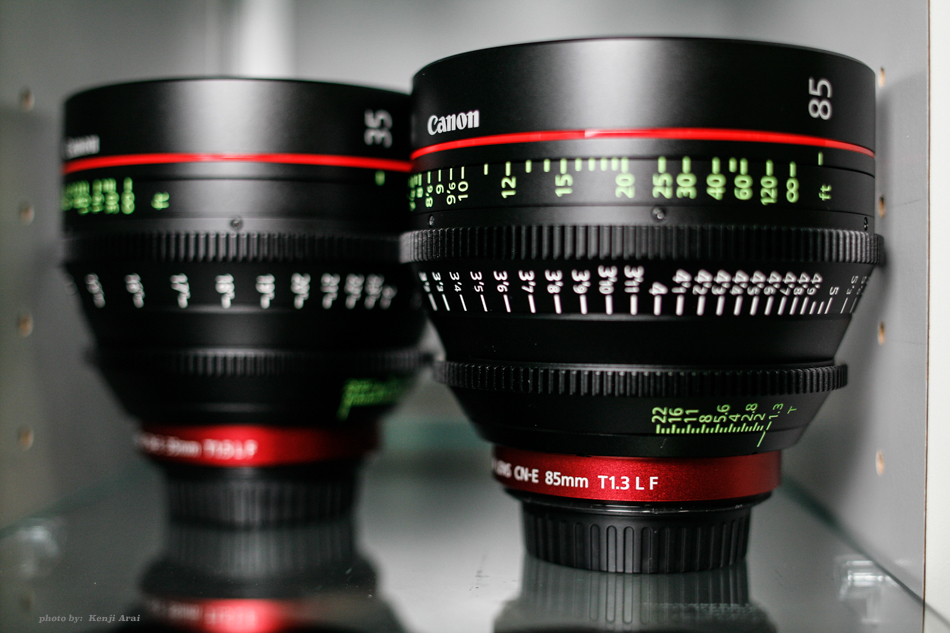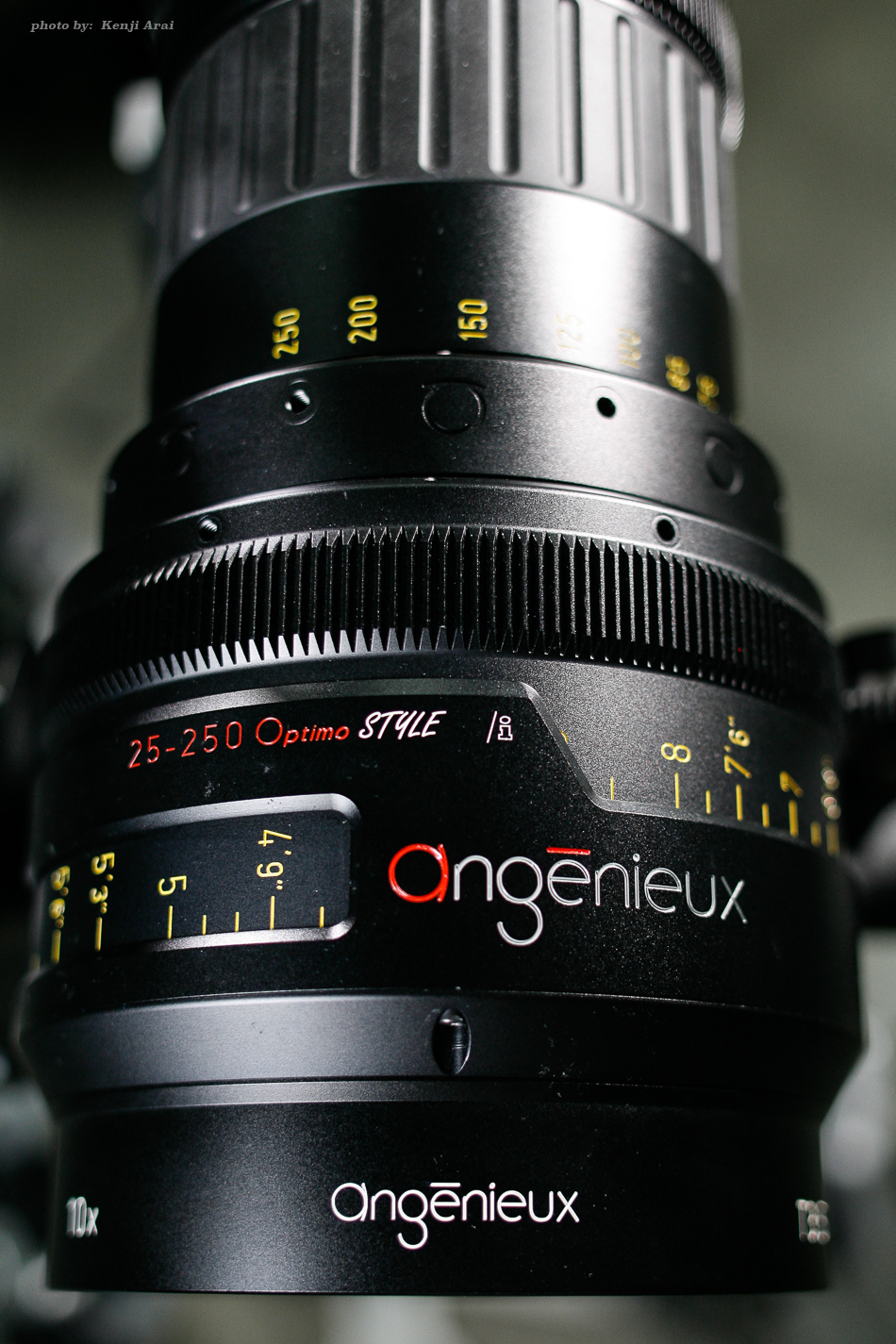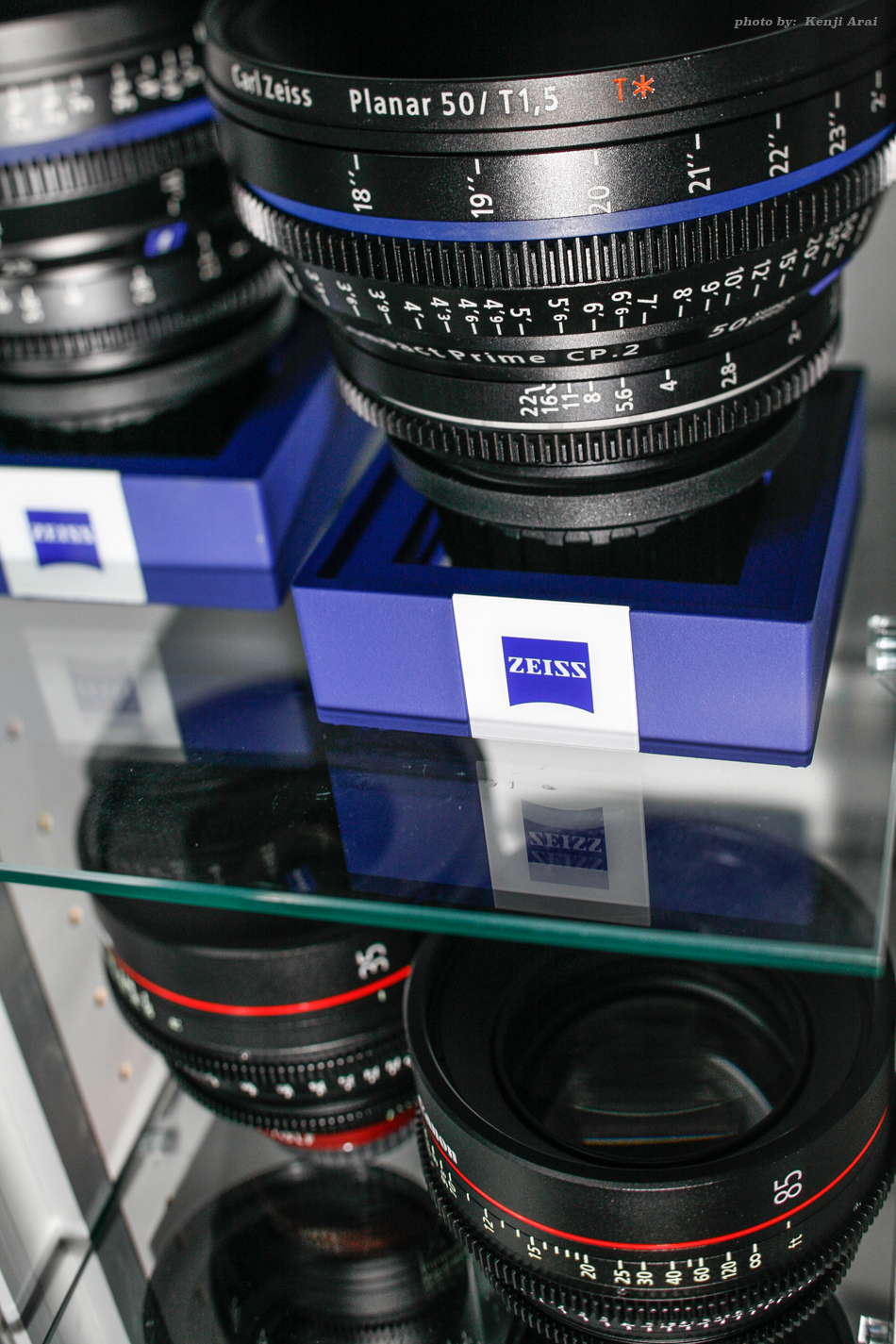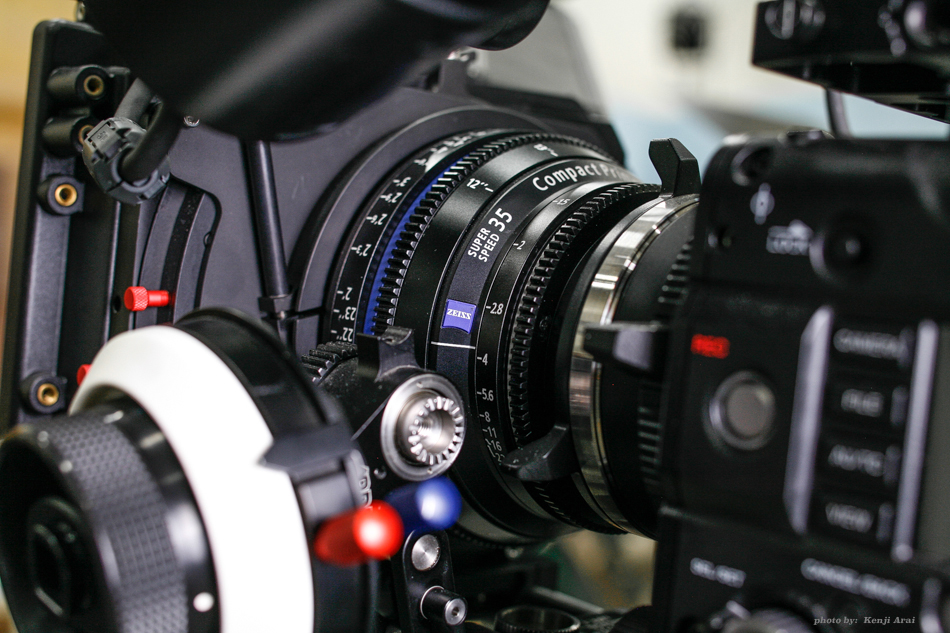I regularly get asked about the differences between cinema lenses and photography lenses for video use.
 “Will cinema lenses really make my video better?”
“What are the advantages?”
“Are they worth the price?”
Good cinema lenses and photography lenses both excel at what they are designed to do. Both will help you create better images and tell better stories, but they are designed to do different things.
Most photography lenses now in professional use are designed for fast dynamic photography and portability. Features like auto-focus and image stabilization are great for shooting events as they happen, such as sports, weddings, and news. The size and weight of your gear is also important and can mean the difference between even bringing a lens with you at all; outdoor photography situations like backpacking and rock climbing come to mind for me.
“Will cinema lenses really make my video better?”
“What are the advantages?”
“Are they worth the price?”
Good cinema lenses and photography lenses both excel at what they are designed to do. Both will help you create better images and tell better stories, but they are designed to do different things.
Most photography lenses now in professional use are designed for fast dynamic photography and portability. Features like auto-focus and image stabilization are great for shooting events as they happen, such as sports, weddings, and news. The size and weight of your gear is also important and can mean the difference between even bringing a lens with you at all; outdoor photography situations like backpacking and rock climbing come to mind for me.
 There are also other specialty photo lenses out there, such as manual focus lenses, lenses with mechanically controlled apertures, and tilt-shift lenses. These are great when more precision is desired, but all still photography lenses are designed to capture and show an image as a single moment in time.
Cinema lenses on the other hand, are designed to take ‘motion pictures.’ A moving picture will show optical characteristics of lenses that are less noticeable in a still photograph. All lenses vignette to some degree and have some amount of distortion, which is much more obvious when you add movement to the frame, therefore cinema lenses are designed with less distortion and vignette. Larger pieces of glass are often needed to achieve a ‘flatter’ image projection to correct for this, particularly in zoom lens designs, so cinema lenses usually have bigger lens barrels than photo lenses.
The wider lens barrels also allow for longer focus rotation; most cinema lenses have over 300º of rotation of their focus barrels. This long, smooth, focus rotation is helpful for tracking focus; you can’t afford to ‘hunt’ for focus when taking a continuous moving shot. Cinema zooms also feature parfocal optics to keep the image sharp while zooming. Precise barrel markings are typically indicated on both the left and right sides of cinema lenses, so camera assistants can read them from either side. Focus marks are indicated in much more detail than on photo lenses to allow for easy repeatable focus moves.
There are also other specialty photo lenses out there, such as manual focus lenses, lenses with mechanically controlled apertures, and tilt-shift lenses. These are great when more precision is desired, but all still photography lenses are designed to capture and show an image as a single moment in time.
Cinema lenses on the other hand, are designed to take ‘motion pictures.’ A moving picture will show optical characteristics of lenses that are less noticeable in a still photograph. All lenses vignette to some degree and have some amount of distortion, which is much more obvious when you add movement to the frame, therefore cinema lenses are designed with less distortion and vignette. Larger pieces of glass are often needed to achieve a ‘flatter’ image projection to correct for this, particularly in zoom lens designs, so cinema lenses usually have bigger lens barrels than photo lenses.
The wider lens barrels also allow for longer focus rotation; most cinema lenses have over 300º of rotation of their focus barrels. This long, smooth, focus rotation is helpful for tracking focus; you can’t afford to ‘hunt’ for focus when taking a continuous moving shot. Cinema zooms also feature parfocal optics to keep the image sharp while zooming. Precise barrel markings are typically indicated on both the left and right sides of cinema lenses, so camera assistants can read them from either side. Focus marks are indicated in much more detail than on photo lenses to allow for easy repeatable focus moves.
 By comparison, the auto-focus motors inside most photography lenses need a short focus rotation to keep the system fast, lightweight, and quiet. Even manual-focus photo lenses have relatively short focus rotation, going from close focus to infinity at the flick of the wrist, again to allow for fast focus adjustment in a dynamic situation. The smaller size of photo lenses also keeps them lighter and more hand-holdable.
Reduced ‘lens breathing’ is another benefit of quality cine glass. Lens breathing refers to how the field of view changes slightly as you change focus. Lens breathing doesn’t come up much in still photography because the focus stays at a set point when the picture is taken, but lens breathing can be a problem when shooting video. Breathing can create an unnatural ’zooming’ effect while shooting video - even causing your composition to change!
Image aesthetics like lens flare and bokeh (the look of the out of focus parts of the image) also become more noticeable in the moving picture of a video shot. As with focus, the iris adjustment on good cinema lenses is very smooth and precise to allow for subtle adjustment during a shot. The iris in most photo lenses however, clicks into preset aperture positions, commonly in 1/3 stop increments. The iris in cinema lenses is often made using more blades than in photo lenses so that the bokeh and highlight bloom will appear rounder and more natural - particularly when the focus is adjusted and these ‘circles of confusion’ grow and shrink.
By comparison, the auto-focus motors inside most photography lenses need a short focus rotation to keep the system fast, lightweight, and quiet. Even manual-focus photo lenses have relatively short focus rotation, going from close focus to infinity at the flick of the wrist, again to allow for fast focus adjustment in a dynamic situation. The smaller size of photo lenses also keeps them lighter and more hand-holdable.
Reduced ‘lens breathing’ is another benefit of quality cine glass. Lens breathing refers to how the field of view changes slightly as you change focus. Lens breathing doesn’t come up much in still photography because the focus stays at a set point when the picture is taken, but lens breathing can be a problem when shooting video. Breathing can create an unnatural ’zooming’ effect while shooting video - even causing your composition to change!
Image aesthetics like lens flare and bokeh (the look of the out of focus parts of the image) also become more noticeable in the moving picture of a video shot. As with focus, the iris adjustment on good cinema lenses is very smooth and precise to allow for subtle adjustment during a shot. The iris in most photo lenses however, clicks into preset aperture positions, commonly in 1/3 stop increments. The iris in cinema lenses is often made using more blades than in photo lenses so that the bokeh and highlight bloom will appear rounder and more natural - particularly when the focus is adjusted and these ‘circles of confusion’ grow and shrink.
 Professional cinema lenses are built differently from photo lenses too. They are made of machined metal, making them durable and easily serviceable. Solid build quality is important for maintaining smooth and precise mechanical movement.
Cinema lenses also have geared lens barrels for the focus, iris, and zoom; this is for operation and compatibility with follow focus systems, remotes, and smooth zoom and iris controls. All of the lens movements need to be kept very smooth so adjustments can be made during a shot.
Unlike photo lenses, where physical size is kept to a minimum, a set of cinema lenses are usually uniform in size and shape to make changing lenses a less painful process. Keeping the matte box distance, follow focus, and any servo motors all lined up in the same position is important, as well as keeping the balance of the rig.
Are dedicated cinema lenses an absolute must for shooting video? No - quality photo lenses can be used to shoot great video too, but once you start working with real cinema glass, you’ll wonder how you ever got by without it.
Professional cinema lenses are built differently from photo lenses too. They are made of machined metal, making them durable and easily serviceable. Solid build quality is important for maintaining smooth and precise mechanical movement.
Cinema lenses also have geared lens barrels for the focus, iris, and zoom; this is for operation and compatibility with follow focus systems, remotes, and smooth zoom and iris controls. All of the lens movements need to be kept very smooth so adjustments can be made during a shot.
Unlike photo lenses, where physical size is kept to a minimum, a set of cinema lenses are usually uniform in size and shape to make changing lenses a less painful process. Keeping the matte box distance, follow focus, and any servo motors all lined up in the same position is important, as well as keeping the balance of the rig.
Are dedicated cinema lenses an absolute must for shooting video? No - quality photo lenses can be used to shoot great video too, but once you start working with real cinema glass, you’ll wonder how you ever got by without it.
 “Will cinema lenses really make my video better?”
“What are the advantages?”
“Are they worth the price?”
Good cinema lenses and photography lenses both excel at what they are designed to do. Both will help you create better images and tell better stories, but they are designed to do different things.
Most photography lenses now in professional use are designed for fast dynamic photography and portability. Features like auto-focus and image stabilization are great for shooting events as they happen, such as sports, weddings, and news. The size and weight of your gear is also important and can mean the difference between even bringing a lens with you at all; outdoor photography situations like backpacking and rock climbing come to mind for me.
“Will cinema lenses really make my video better?”
“What are the advantages?”
“Are they worth the price?”
Good cinema lenses and photography lenses both excel at what they are designed to do. Both will help you create better images and tell better stories, but they are designed to do different things.
Most photography lenses now in professional use are designed for fast dynamic photography and portability. Features like auto-focus and image stabilization are great for shooting events as they happen, such as sports, weddings, and news. The size and weight of your gear is also important and can mean the difference between even bringing a lens with you at all; outdoor photography situations like backpacking and rock climbing come to mind for me.
 There are also other specialty photo lenses out there, such as manual focus lenses, lenses with mechanically controlled apertures, and tilt-shift lenses. These are great when more precision is desired, but all still photography lenses are designed to capture and show an image as a single moment in time.
Cinema lenses on the other hand, are designed to take ‘motion pictures.’ A moving picture will show optical characteristics of lenses that are less noticeable in a still photograph. All lenses vignette to some degree and have some amount of distortion, which is much more obvious when you add movement to the frame, therefore cinema lenses are designed with less distortion and vignette. Larger pieces of glass are often needed to achieve a ‘flatter’ image projection to correct for this, particularly in zoom lens designs, so cinema lenses usually have bigger lens barrels than photo lenses.
The wider lens barrels also allow for longer focus rotation; most cinema lenses have over 300º of rotation of their focus barrels. This long, smooth, focus rotation is helpful for tracking focus; you can’t afford to ‘hunt’ for focus when taking a continuous moving shot. Cinema zooms also feature parfocal optics to keep the image sharp while zooming. Precise barrel markings are typically indicated on both the left and right sides of cinema lenses, so camera assistants can read them from either side. Focus marks are indicated in much more detail than on photo lenses to allow for easy repeatable focus moves.
There are also other specialty photo lenses out there, such as manual focus lenses, lenses with mechanically controlled apertures, and tilt-shift lenses. These are great when more precision is desired, but all still photography lenses are designed to capture and show an image as a single moment in time.
Cinema lenses on the other hand, are designed to take ‘motion pictures.’ A moving picture will show optical characteristics of lenses that are less noticeable in a still photograph. All lenses vignette to some degree and have some amount of distortion, which is much more obvious when you add movement to the frame, therefore cinema lenses are designed with less distortion and vignette. Larger pieces of glass are often needed to achieve a ‘flatter’ image projection to correct for this, particularly in zoom lens designs, so cinema lenses usually have bigger lens barrels than photo lenses.
The wider lens barrels also allow for longer focus rotation; most cinema lenses have over 300º of rotation of their focus barrels. This long, smooth, focus rotation is helpful for tracking focus; you can’t afford to ‘hunt’ for focus when taking a continuous moving shot. Cinema zooms also feature parfocal optics to keep the image sharp while zooming. Precise barrel markings are typically indicated on both the left and right sides of cinema lenses, so camera assistants can read them from either side. Focus marks are indicated in much more detail than on photo lenses to allow for easy repeatable focus moves.
 By comparison, the auto-focus motors inside most photography lenses need a short focus rotation to keep the system fast, lightweight, and quiet. Even manual-focus photo lenses have relatively short focus rotation, going from close focus to infinity at the flick of the wrist, again to allow for fast focus adjustment in a dynamic situation. The smaller size of photo lenses also keeps them lighter and more hand-holdable.
Reduced ‘lens breathing’ is another benefit of quality cine glass. Lens breathing refers to how the field of view changes slightly as you change focus. Lens breathing doesn’t come up much in still photography because the focus stays at a set point when the picture is taken, but lens breathing can be a problem when shooting video. Breathing can create an unnatural ’zooming’ effect while shooting video - even causing your composition to change!
Image aesthetics like lens flare and bokeh (the look of the out of focus parts of the image) also become more noticeable in the moving picture of a video shot. As with focus, the iris adjustment on good cinema lenses is very smooth and precise to allow for subtle adjustment during a shot. The iris in most photo lenses however, clicks into preset aperture positions, commonly in 1/3 stop increments. The iris in cinema lenses is often made using more blades than in photo lenses so that the bokeh and highlight bloom will appear rounder and more natural - particularly when the focus is adjusted and these ‘circles of confusion’ grow and shrink.
By comparison, the auto-focus motors inside most photography lenses need a short focus rotation to keep the system fast, lightweight, and quiet. Even manual-focus photo lenses have relatively short focus rotation, going from close focus to infinity at the flick of the wrist, again to allow for fast focus adjustment in a dynamic situation. The smaller size of photo lenses also keeps them lighter and more hand-holdable.
Reduced ‘lens breathing’ is another benefit of quality cine glass. Lens breathing refers to how the field of view changes slightly as you change focus. Lens breathing doesn’t come up much in still photography because the focus stays at a set point when the picture is taken, but lens breathing can be a problem when shooting video. Breathing can create an unnatural ’zooming’ effect while shooting video - even causing your composition to change!
Image aesthetics like lens flare and bokeh (the look of the out of focus parts of the image) also become more noticeable in the moving picture of a video shot. As with focus, the iris adjustment on good cinema lenses is very smooth and precise to allow for subtle adjustment during a shot. The iris in most photo lenses however, clicks into preset aperture positions, commonly in 1/3 stop increments. The iris in cinema lenses is often made using more blades than in photo lenses so that the bokeh and highlight bloom will appear rounder and more natural - particularly when the focus is adjusted and these ‘circles of confusion’ grow and shrink.
 Professional cinema lenses are built differently from photo lenses too. They are made of machined metal, making them durable and easily serviceable. Solid build quality is important for maintaining smooth and precise mechanical movement.
Cinema lenses also have geared lens barrels for the focus, iris, and zoom; this is for operation and compatibility with follow focus systems, remotes, and smooth zoom and iris controls. All of the lens movements need to be kept very smooth so adjustments can be made during a shot.
Unlike photo lenses, where physical size is kept to a minimum, a set of cinema lenses are usually uniform in size and shape to make changing lenses a less painful process. Keeping the matte box distance, follow focus, and any servo motors all lined up in the same position is important, as well as keeping the balance of the rig.
Are dedicated cinema lenses an absolute must for shooting video? No - quality photo lenses can be used to shoot great video too, but once you start working with real cinema glass, you’ll wonder how you ever got by without it.
Professional cinema lenses are built differently from photo lenses too. They are made of machined metal, making them durable and easily serviceable. Solid build quality is important for maintaining smooth and precise mechanical movement.
Cinema lenses also have geared lens barrels for the focus, iris, and zoom; this is for operation and compatibility with follow focus systems, remotes, and smooth zoom and iris controls. All of the lens movements need to be kept very smooth so adjustments can be made during a shot.
Unlike photo lenses, where physical size is kept to a minimum, a set of cinema lenses are usually uniform in size and shape to make changing lenses a less painful process. Keeping the matte box distance, follow focus, and any servo motors all lined up in the same position is important, as well as keeping the balance of the rig.
Are dedicated cinema lenses an absolute must for shooting video? No - quality photo lenses can be used to shoot great video too, but once you start working with real cinema glass, you’ll wonder how you ever got by without it.






